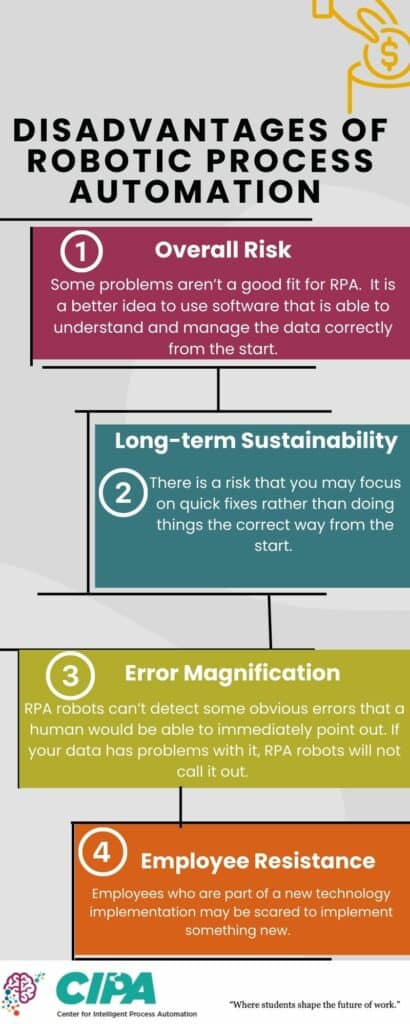RPA is Filling the Gap Between Business and Technology
There are many advantages of Robotic Process Automation (RPA). But let us start by looking at six of the top advantages.

- RPA reduces costs for an organization.
- Human capital can be redeployed because automation can handle repetitive processes.
- You can move fast! RPA has a relatively short time between development and deployment of automation. In most cases, small problems in automation take the longest time.
- Due to the accuracy and timeliness process, the automation causes improved customer experience. The accuracy of the automation is a whole advantage on its own. This is because automation is a lot less likely to make mistakes. Since automations do not get tired, exhausted, or frustrated it cannot make mistakes like humans.
- RPA is also designed to be flexible by mimicking the daily decision-making process that humans would use.
- Lastly, RPA can boost company morale by allowing staff to devote more time and talent to other meaningful work.
To be fair, there are also some disadvantages to Robotic Process Automation (RPA). We have identified four disadvantages that you should think about before adopting RPA as a strategy.

- The first disadvantage of RPA is the overall risk. Some problems and processes are not a good fit. It is a better idea to use software that can understand and manage the data correctly from the start.
- Sometimes you can focus too much on short term solutions with RPA. There is a risk that organizations may focus on quick fixes rather than doing some discovery and analysis to do things the correct way, right away. For these organizations, business analysis is essential.
- Although automation has fewer mistakes there is a chance for error magnification if the data being used has embedded errors. RPA may not detect some obvious errors that a human might be able to. This occurs mostly with the data, which is why it is important to ensure there are no problems with the data from the start.
- Lastly, there can be employee resistance, especially with innovative technology like RPA. Managing expectations and educating staff about the advantages and opportunities RPA presents can help alleviate the fear of “being replaced.”

